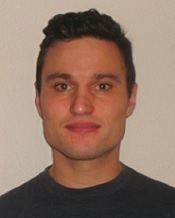Program Information
A General Model for Stray Dose Calculation of Static and Intensity-Modulated Photon Radiation for 15 MV Beam Energy
P Hauri*, P Hasler , U Schneider , Hislanden Medical Center, Zuerich, Zuerich
Presentations
SU-K-FS1-2 (Sunday, July 30, 2017) 4:00 PM - 6:00 PM Room: Four Seasons 1
Purpose: An analytical stray dose model to calculate the whole-body out-of-field dose of linear accelerators was previously published. The model utilized a nominal beam energy of 6 MV to describe the three major components of stray dose: patient scatter, collimator scatter and head leakage. In this study, the stray dose model was extended for 15 MV beam energy using ionization chamber measurements. Afterwards, the model’s accuracy in calculating the out-of-field dose for various treatment techniques was investigated.
Methods: The four parameters of the mechanistic patient scatter model were determined for nominal beam energy of 15 MV by using training measurements in simple geometries. For the same beam energy, a set of stray dose measurement was used to adjust the empirical collimator scatter and head leakage models which were previously developed for 6 MV. Using 183 thermoluminescent dosimeters distributed in an anthropomorphic phantom, whole-body dose measurements of static and intensity-modulated treatment plans were compared to 3D out-of-field dose distributions calculated by the stray dose model.
Results: The dose deposited by patient scatter was less for 15 MV compared to 6 MV nominal beam energy. The mean and standard deviation between the whole-body predicted and the measured out-of-field dose of the three different plans was 11% ± 12% with a maximum difference below 45%. Starting 3 cm from the field edge, the accuracy in predicting the out-of-field dose by the stray dose model was better than the prediction by treatment planning system.
Conclusion: The stray dose model was extended for a nominal beam energy of 15 MV. The model is generally applicable for 3DCRT, IMRT, and VMAT techniques of 15 MV nominal beam energy.
Funding Support, Disclosures, and Conflict of Interest: This work was funded by the grant KFS-3249-08-2013 from the Swiss Cancer League.
Contact Email:
